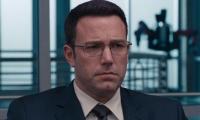On September 20, Hurricane Maria swept through the United States territory of Puerto Rico and devastated the island. The death toll is not yet confirmed. It is hard to know what is happening since the roads in the interior of the island remain impassable and communications networks are down.
Three weeks after Hurricane Maria left the island, the 3.4 million Puerto Ricans remain in the dark. It is estimated that 85 per cent of the population will not get power for at least six months and that 40 per cent of the islanders will not have access to drinking water. Waterborne diseases threaten the people, whose health has been further endangered by the threadbare hospitals.
The government of the island and US President Donald Trump have been exaggerating the situation in the island. For instance, Puerto Rico’s Governor, Ricardo Rossello, said that 63 of the island’s 69 hospitals were fully operational. The Centre for Investigative Journalism (Puerto Rico) suggested that this was impossible. A week before Governor Rossello made these comments, 56 hospitals were closed. When the staff from the centre called many of the hospitals that were said to be operational, they found them not in any state to receive patients. The government suggests that the death toll was somewhere in the vicinity of 45. But Representatives Nydia Velasquez (Democrat of New York) and Bennie Thompson (Democrat of Mississippi) wrote to the Department of Homeland Security suggesting that the death toll was being “woefully underreported”. They say that at least 450 people might have died in this calamity.
Donald Trump arrived in Puerto Rico on October 3. He suggested that the death toll was minimal – 16. “Everybody around this table,” he said of the political leaders and disaster relief personnel, “and everybody watching can really be very proud of what’s taken place in Puerto Rico.” He was in San Juan, the capital, where he visited the wealthy suburb of Guynabo, whose gated communities were spared the devastation visited on nearby poor neighbourhoods such as La Perla or Barriada. Small towns outside San Juan such as Florida and Caguas suffered a complete apocalypse: sewer water ran through the streets of Florida, while houses in Caguas lost their roofs whose metal dammed up creeks and increased the flooding.
Trump went to the Calvary Church where chartered flights were bringing in meals for the more affluent residents. Trump threw rolls of paper towels at people in his version of providing relief. The journalist Valeria Collazo Canizares put it most wryly: “Our catastrophe is not real. Our need is towel paper. Our dead, a pride. The resources sent, a budget deficit.”
Valeria Collazo Canizares’ statement about the budget deficit is utterly along the grain of reality. For the past several years, the island has been struggling to manage a depressingly bad financial situation (“Puerto Rico: A Greece Moment”, August 7, 2015). This hurricane has now set the island on course to total bankruptcy. Puerto Rico is saddled with a $74 billion debt, with its own bonds worth pennies on the dollar. There is no easy way for Puerto Rico to move to solvency. “We are going to wipe that out,” Trump had said about the debt in one of his moments of paternalist braggadocio. Trump’s statement crashed Puerto Rico’s already defaulted bonds. Then, hastily, his administration walked back from his statement.
This article was excerpted from: ‘The Devastation of Puerto Rico.’
Courtesy: Counterpunch.org
A woman walks past a building of the International Monetary Fund. — AFP/FileThe annual and spring meetings of the...
Late Benazir Bhutto's daughter Asifa Bhutto Zardari addresses the Christian community in Bihar Colony on January 23,...
Representational image. — PexelsWater is an important scarce natural resource that is required for several everyday...
Pakistani employees of online marketplace company Kaymu at work in Karachi. — AFP/FileThe true spirit of development...
India uses Afghanistan as a backstage area to carry out terrorist attacks against Pakistan
Another report by the Pakistan Institute of Peace Studies states that 78 per cent of attacks have been carried out by...







